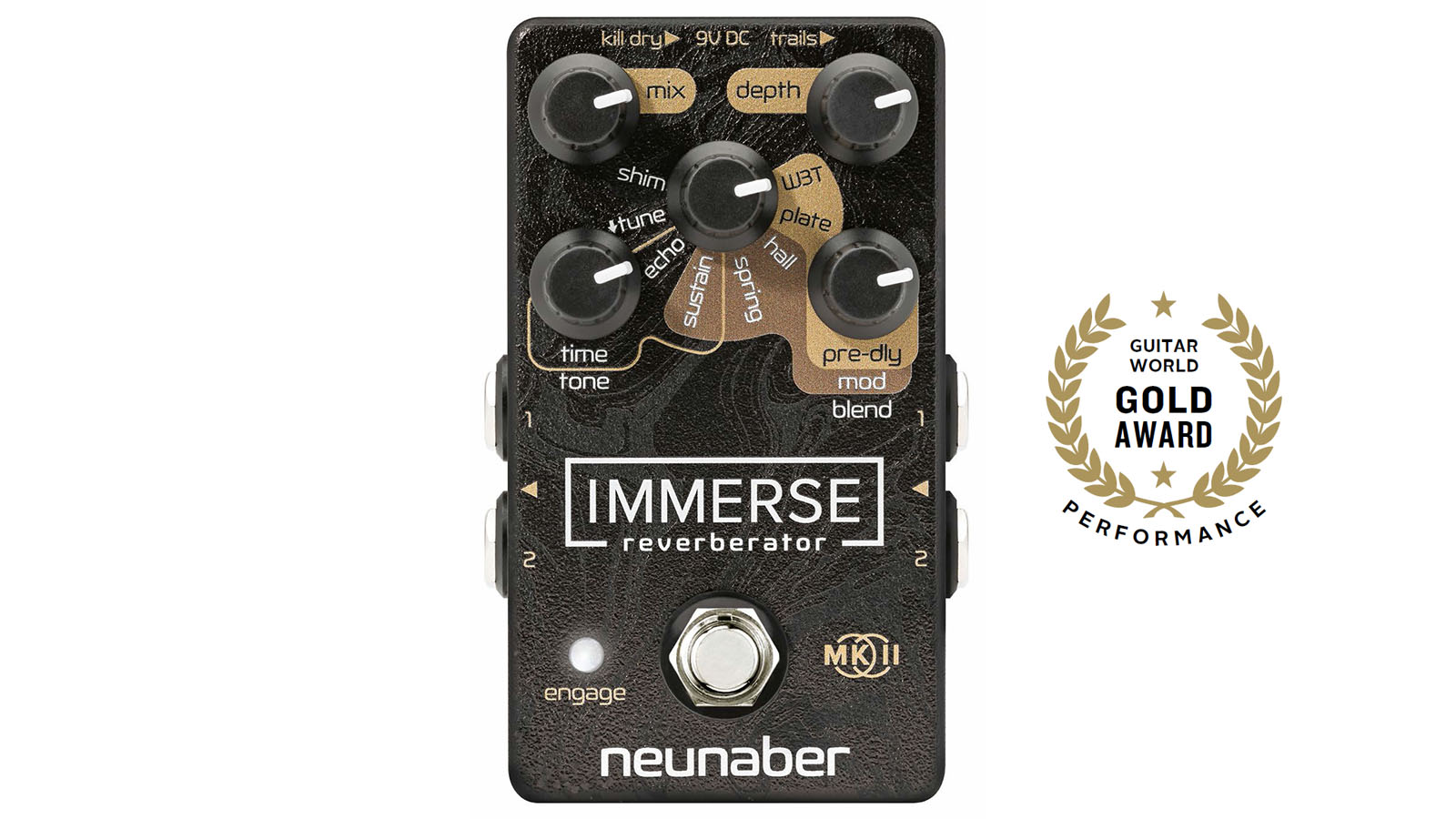Review: Neunaber Immerse Reverberator MKII
The Neunaber Immerse Reverberator provides an impressive selection of effects with the sound quality of the finest pro-audio digital reverb units in a compact format.

Professional-quality digital reverb is a lot like fine wine — most people don’t always appreciate or understand the details that separate the good from the great or the average from the awesome, but those who do get it won’t settle for anything less than the best. Unlike fine wine (which can be outrageously expensive) advancements in technology and production have made pro-quality reverb more affordable for average Joes and two-buck Chucks. Neunaber significantly raised the stakes with the introduction of their Immerse Reverberator, which offered true pro-quality reverb effects in an affordable pedal format. Now Neunaber has released a new and improved version — the Immerse Reverberator MKII — which delivers even lusher and richer reverb effects and more to satisfy discriminating reverb aficionados.
FEATURES Unlike most studio reverb units that require advanced degrees in physics and audio engineering to program and operate, the Neunaber Immerse Reverberator MKII has a simple “plug and play” design that delivers the goods with minimal effort. A rotary switch located dead center amongst the front panel controls provides eight distinct reverb effects: W3T (wet version 3), Plate, Hall, Spring, Sustain, Echo (reverb + delay), Detune and Shimmer. The other controls consist of mix, reverb depth and two other knobs that adjust different parameters (tone/echo time/hold time and pre-delay/modulation/blend) depending on which effect is selected. At the top of the pedal near the jack for the 9-volt power supply are mini switches for Kill Dry (engages 100 percent wet effects for use with parallel effects loops) and Trails (on setting allows reverb to decay natural when pedal is bypassed, off setting instantly cuts off decay when pedal is bypassed) functions. Separate pairs of ¼-inch input and output jacks provide true stereo operation in addition to mono. The Immerse Reverberator MKII also features a high-quality buffered bypass to optimize and restore sound quality, which is especially useful as most guitarists place reverb pedals at the end of the signal chain directly before the amp’s input.
PERFORMANCE Only a few decades ago, one would have needed to spend upwards of $5,000 for digital reverb this lush, dense, warm and realistic. But more importantly for non-“reverb snobs,” the Immerse Reverberator MKII sounds extremely expressive and musical. The Plate, Hall and Spring reverbs are exactly that, each with the distinct character that defines those effects. The modulation of the Hall, Spring and Sustain effects is seductively rich, and the Detune effect generates the lushest chorused reverb effect I’ve ever heard with crystalline clarity.
STREET PRICE: $249
MANUFACTURER: Neunaber Audio USA, neunaber.net
● The rotary switch knob in the center of the front panel controls selects eight distinct reverb effects ranging from authentic spring and plate reverb to synth-like shimmer and sustain effects ● Switches for Kill Dry and Trails on/off functions are conveniently located on the top, front-facing panel where guitarists can access them quickly and easily
THE BOTTOM LINE The Neunaber Immerse Reverberator provides an impressive selection of effects with the sound quality of the finest pro-audio digital reverb units in a compact format that’s both pedalboard and guitarist friendly
Get The Pick Newsletter
All the latest guitar news, interviews, lessons, reviews, deals and more, direct to your inbox!
Chris is the co-author of Eruption - Conversations with Eddie Van Halen. He is a 40-year music industry veteran who started at Boardwalk Entertainment (Joan Jett, Night Ranger) and Roland US before becoming a guitar journalist in 1991. He has interviewed more than 600 artists, written more than 1,400 product reviews and contributed to Jeff Beck’s Beck 01: Hot Rods and Rock & Roll and Eric Clapton’s Six String Stories.
“Our answer to everything players have asked for and more”: Neural DSP’s Nano Cortex had one major drawback – but now it’s been addressed with a huge free firmware update that takes on Kemper and TONEX
"The ability to use this as a midweight MIDI brain for a gigging setup is what makes it unique.": Walrus Audio Canvas Clock review



![[from left] George Harrison with his Gretsch Country Gentleman, Norman Harris of Norman's Rare Guitars holds a gold-top Les Paul, John Fogerty with his legendary 1969 Rickenbacker](https://cdn.mos.cms.futurecdn.net/TuH3nuhn9etqjdn5sy4ntW.jpg)







